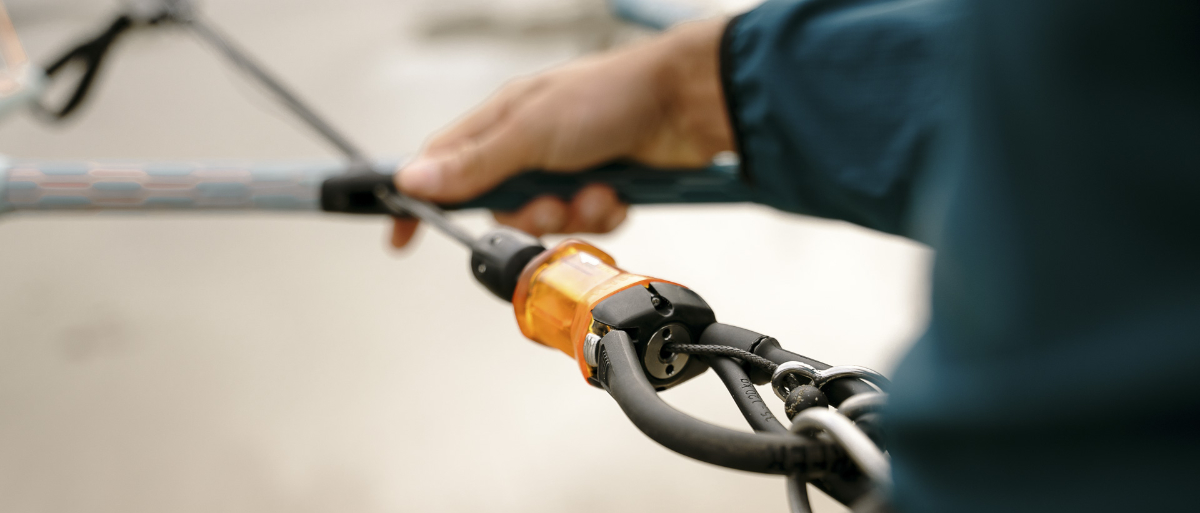Wear and tear of lines
Modern lines have incredible properties: Thin, tear-resistant, stiff and light. Despite some amazing durability, they wear out at some point Unfortunately, it is not always easy to tell exactly when. We would like to offer a rough guide here with a reference to personal responsibility.
1. shortening
Lines are pre-stretched with a very high load before delivery and in this state they are caked together with a coating. If this "bonding" breaks open, the line becomes slightly thicker at this point and thus shorter. This can be as much as one percent of the total length. We know of cases of a manufacturer where steering lines have shortened by half a metre. This is not necessarily a bad thing. Nevertheless, shortened lines become softer and therefore the kite may feel more indirect on an old bar.
2. knots
A clear sign that a line should be changed: A knot that cannot be untied. If you have a knot in a line where it does not belong, the breaking load is usually reduced by more than half(!). Therefore, remove the knot carefully. It helps to flatten it a bit with a smooth tool and then patiently remove it. Some people also chew on lines. Then inspect the line at the spot thoroughly to make sure that the line has not suffered any damage.
3. abrasion
flying lines
It is less easy with normal wear and tear. Often they are particularly worn where they rub against each other after rotations during steering. Sometimes it is then possible to turn the lines over so that they rub in a different place. If there has been contact with other lines or a sharp object, the whole line should be examined very carefully and replaced if necessary. As soon as there are also nicks in the fibres, utmost haste is advised.
Depower lines
Depower lines, also called centrelines, constantly rub against the eyelet of the bar and therefore wear out the most. Depending on the bar and use, they sometimes even have to be replaced several times per season. The ropes we use have a special abrasion-resistant coating and are often much cheaper than the originals. If the rope is roughened and fibres are visible, you should examine them more closely. A pretty sure sign: If a notch has formed in the rope at one point, it is high time. The rope should definitely be replaced to prevent a floatation or a fall when jumping.
4. storage
Even if you don't go kiting, lines are subject to an ageing process. The keyword is "polymer degeneration". That's why the manufacturer Liros recommends replacement after 10 years, even for little-used lines. Store your bar in a cool, well ventilated and dry place. 5.
5. harmful influences
Of course: Friction is what damages a line the most. In second place is UV light. It is therefore advisable to expose the leashes to as little sunlight as possible. Salt causes increased internal abrasion, which is why it is recommended to rinse bars with fresh water if they have been used in salt water. For the sake of completeness, we would like to mention that chemicals have no place on kitesurfing lines.
We hope this guide has helped you and we wish you lots of fun and safe sessions.
Translated with www.DeepL.com/Translator (free version)

